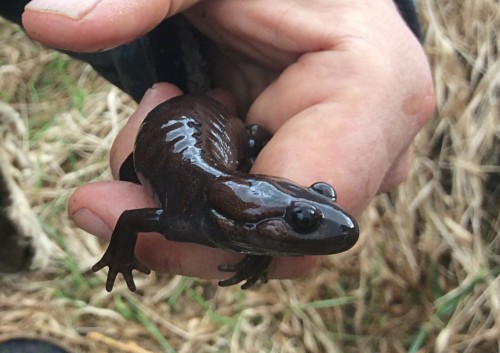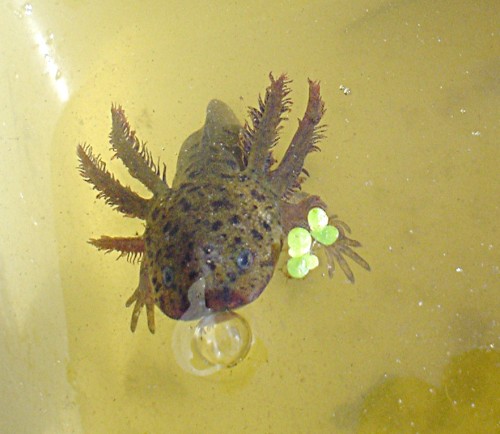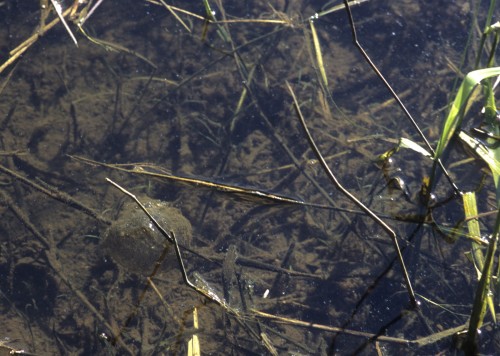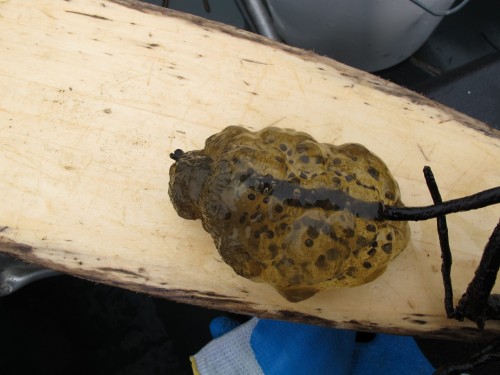Ambystoma gracile
Identification Tips:
Adults
• Two ditsinct forms: Aquatic and Terrestrial
• Aquatic larger (to 25 cm) with long feathery gills extending from neck
• Terrestrial has hooded, slightly protruding eyes and prominent glands behind eyes
• Usually black or dark brown in colour
• Approximately half body length is tail
• Patches of white or yellowish flecks may be present
• Prominent grooves between ribs (10-12)
• Ridge-like gland along top of tail
Egg Masses
• Baseball size round or oval in shape with very firm jelly
• Firmly attached to aquatic vegetation, submerged branches or other objects
Conservation Status:
| British Columbia | Canada | Natureserve | |
| COSEWIC | Species at Risk Act | ||
| Not at Risk (Yellow List) | Not Assessed | None | G5, S4S5 |
Life History:
• Two forms of this salamander commonly occur, often in the same population
• Terrestrial individuals are usually close to water, hidden in deep leaf litter, underground, or beneath logs
• Aquatic individuals are larger, retain their larval gills, and occur in ponds and slow moving streams
• Breed from late February to late March in the Fraser Valley; later at elevation
• Female lays single mass of 30-50 eggs in permanent ponds, wetlands, and slow moving streams
• Larvae overwinter at least once
• Feed on a wide variety of invertebrates; small larvae consume zooplankton
• Exudes white sticky toxin from glands behind eyes and along top of tail when threatened
• Rarely preyed upon by fish
Habitat:
• Permanent water bodies including ponds, wetlands, lake and slow moving streams
• Forest, woodlands fields adjacent to water bodies
• Sometimes occur in water with very low oxygen content
• Sea level to over 3000 m elevation
Range:
British Columbia
• West of Coast mountains along entire mainland coast
• Vancouver Island, but not Haida Gwaii
Global
• Southeast Alaska to northern California
––––––
Primary Information Sources:
Efauna BC: http://ibis.geog.ubc.ca/biodiversity/efauna/
BC Conservation Data Centre: http://a100.gov.bc.ca/pub/eswp/





